| What Stories Do We Have To Tell? This is the question that started it all.
The task of trying to tell the story of the disappearing grain elevators was a challenging one for many reasons. First of all many of the students had no idea what a grain elevator was. Some thought it was a way of carrying grain to a supermarket while others thought it was a place where pioneers made their bread.
Trying to learn about grain elevators and their forgotten stories was a challenge for both the students and myself because most of the grain elevator resources are written for farmers and those familiar with farming. Most resources are either about the mechanical aspects or are simply photos of structures that have long since been destroyed.
GREAT TASKS ARE HARD FUN
I was presented with the question…do I give up and develop work sheets that explain the workings of a grain elevator and call it a day? Do I narrow their exposure down to the one or two books and web sites that I felt they could understand? What do I really want them to get out of this enquiry now that I am faced with so few suitable resources?
All I had to do was show the children the books and photos and the questions and comments started to fly; "They are so tall! Why are they so tall? They are brightly coloured. Why are they brightly coloured? What do the words say on the side of the building? What do the words mean? What were the buildings used for?
I literally watched the inquiry start to unfold with very little help from me.
Then there came a time when it was my turn to pose some questions. I asked them why so many of the children's picture books about the prairies had illustrations of grain elevators, however so few of them had ever heard of or seen grain elevators themselves? What might this mean? Where have the grain elevators all gone? Why are they gone? What do the farmers do with the grain now?
GREAT TASKS ARE AUTHENTIC
The fact that we had done a great deal of talk and inquiry around family artifacts, gave the students an appreciation for heirlooms, historical objects and buildings, and their stories. They understood that stories can be lost and history forgotten. This allowed them to ask the necessary question for our grain elevator inquiry. "How will we keep the story of the grain elevator alive for future generations if there are no grain elevators left to paint, photograph, visit, and write about?"
They had each written stories, taken photographs and drawn pictures of their own family artifacts so the natural progression and obvious connection for them was to write about and paint grain elevators. So that is what we did.
A concept that is difficult for children of this age to grasp is the passing of time. This enquiry helped them to understand this concept with certainty. One grade two child wrote about a grain elevator who loved when a farmer brought his grandson to drop off the grain every Saturday. "I love seeing James and his Grandpa come and drop off their grain….Now I am getting old. James's Grandpa died last Summer. James still comes and drops off his grain. I see James and his son now every Saturday. My paint is peeling off. I am starting to fall down. I'm still standing though. I hope I do not fall down. I want to see James's son grow up."
Without a doubt this child understands.
GREAT TASKS REACH BEYOND THE CLASSROOM
"How will we keep the story of the grain elevator alive for future generations if there are no grain elevators left to paint, photograph, visit, and write about?" This is a HUGE question for a child of 5 or 7yrs. Was I burdening them with issues and concerns that were too advanced for them to comprehend? Again I asked myself if I should just have them paint a few pictures and call it a day.
And then like a higher power was at work we met Walter. He was the subject of a newspaper article about building a legacy for the grain elevator. He wanted to talk to anyone who shared his vision. So Spencer (Grade One) made the call. right from our classroom. "Hello Mr. Danylak, we need to meet with you to talk about grain elevators. Can you come next Thursday afternoon?" Short and to the point. Spencer meant business. This was important stuff.
GREAT TASKS INVOLVE CONSTRUCTION AND EMPOWER LEARNERS.
When Mr. Danylak came to our school after our field trip to the Grain Academy he brought with him a model of a grain elevator museum that he and a group want to build in High River. The kids were fascinated. They were excited to show him their own 8 foot tall grain elevator that the older kids in our school helped them build in our reading corner. Walter watched them draw grain elevators and admired the water colour paintings they had done. He shared the photographs that he had taken of the few remaining grain elevators in our province. Aaron (grade one) in turn proudly shared the photograph that he had taken on his way home from a skiing holiday of a grain elevator at sunset. When Walter explained that the grain elevator museum would not be built out of wood (so that it would not burn down) it was Aaron who stood up and boldly asked "WHAT'S THE POINT THEN!" He expressed that it was very important for the grain elevator museum to look exactly like the real thing. Once Walter explained that they were going to use siding that looked like real wood, Aaron was content again.
GREAT TASKS ARE COLLABORATIVE
I was working on this enquiry with a grade one/two class. Their abilities and interests varied greatly and over the course of the enquiry I acquired three new students who needed to be brought up to speed and inspired. In fact it was the other students who invited the new students into the inquiry with very little help from me. Their excitement and enthusiasm was contagious.
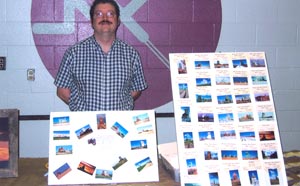
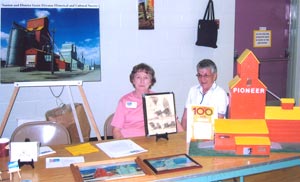
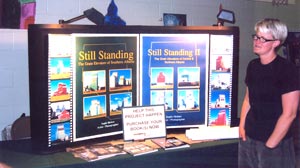
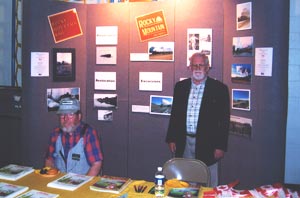
I knew that one grade one boy understood about the importance of preserving history when he wrote in his grain elevator story "I am a grain elevator…now my friends have been torn down but I have been turned into a museum. The grandson is grown up. He is a farmer now. He tells children about when he was a little boy." He understands the word "story" is embedded in the word "history"
Another grade one child wrote "I still stand but I know that I am the next to be knocked down. I am not ready" This is a very profound statement for a child of 7 to make.
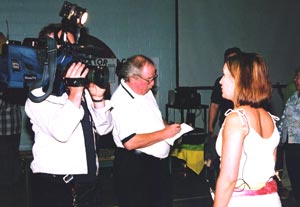
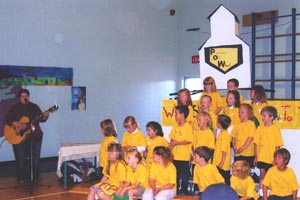
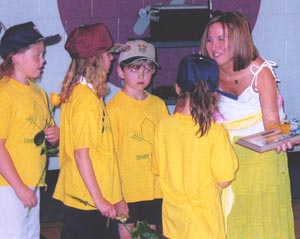
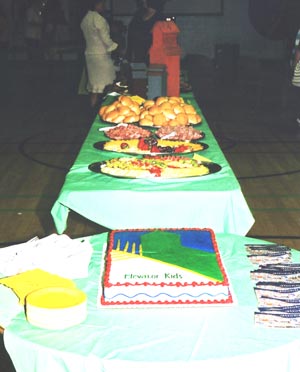
GREAT TASKS DEVELOP HABITS OF MIND
Through the writing of the grain elevator stories the children learned how to look at a problem from different perspectives. They learned that they needed to investigate why grain elevators were being torn down. They needed to look at all angles. The children had to find out for themselves why and how grain elevators burn to the ground and that most were torn down to prevent these fires from happening. I couldn't just tell them.
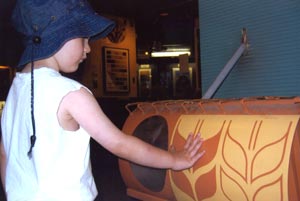
They initially wanted to get on board with a community group and save a grain elevator in a small town but then decided that maybe saving the actual structure wasn't such a good idea…after all that is what Walter's High River group did and then the "saved" grain elevator burned down in the end anyway…endangering the entire town. They decided that perhaps Walter's idea of building a grain elevator replica museum would be a safer alternative that they could support. In order to come to this conclusion they needed to understand all the factors.
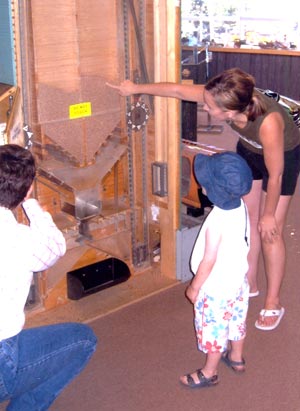
In the beginning I was worried about imposing my own passion for grain elevators on the children. I did not want the enquiry to be politically driven. In the end they each took out of the enquiry what they were ready to take out of it.
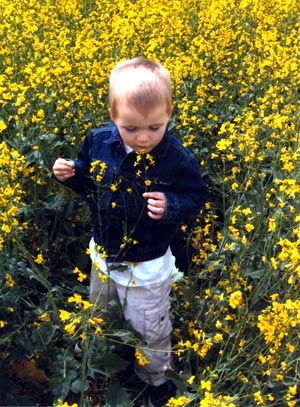
Some left with a simple understanding of the role grain elevators played in pioneer life and our province's history. And others left with a more profound understanding of how important it is to preserve this history. Most of the children left feeling empowered by the thought that their voice, their journey, and their stories can genuinely contribute to shaping the future for the next generation of learners.
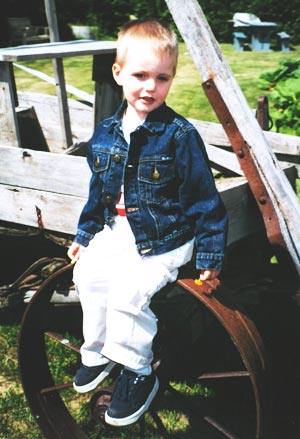
Most of all this enquiry has taught all the students that everyone and everything has a story and that it is these stories that connect the present to the past and help us look wisely at the future.
Jennifer George
Grade One/Two teacher
Prince Of Wales Elementary School
A PARENTS PERSPECTIVE
"It's a rare thing to see one's children come home from school every day with that same passion. Since their class started their Galileo project, my son has been inspired to write more prolifically, think more deeply, and become more creative with his artwork. It has challenged him at the level he's ready to tackle, while prompting him to stretch beyond. The project has also cleverly tapped into his natural curiosity, such as he's eager to explore more each day and has made the project's cause his own. He even wants to lobby the government on its behalf. He's excited, his teacher's excited, and so am I. With this project, my song isn't learning because he has to—he's learning because he wants to. I think Galileo is on to something"—Marie Stevens, parent of a Grade 1 student.
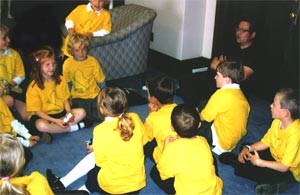
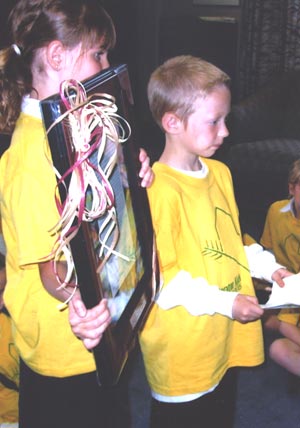
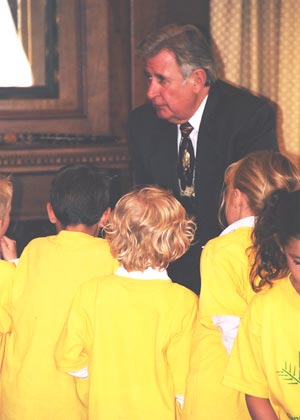
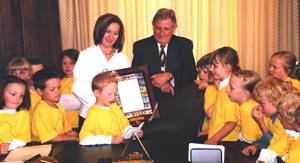
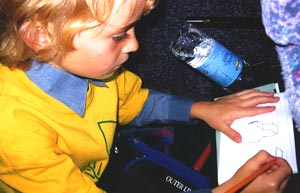

|
